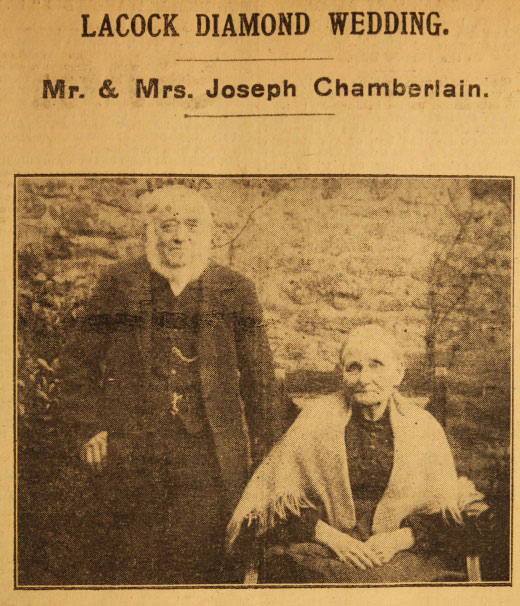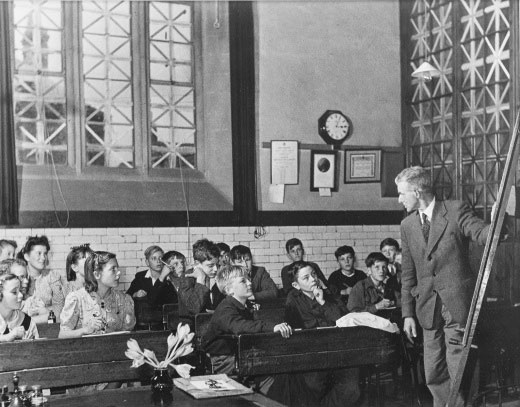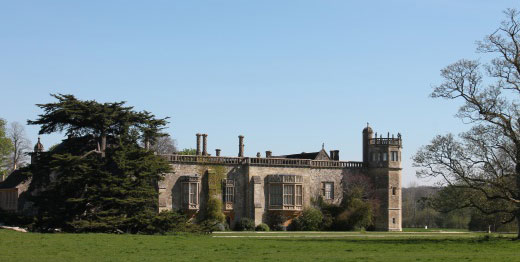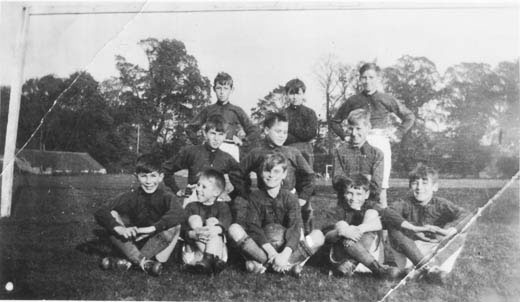I have been based at the Wiltshire and Swindon History Centre for the past eight months for my National Archives Transforming Archives Traineeship. My traineeship has been focused on developing a community archive for the historic village of Lacock as part of a much wider Heritage Lottery Funded project called Lacock Unlocked. I have been collecting fascinating photographs, recording incredible memories of local residents and discovering the hidden treasures within the village.
What are community archives?
Community archives are becoming an ever more prominent feature of the archive field. They are a collection of materials that tell the story of a local community, organisation or group. These can include documents, images, diaries, etc. which form a vital part of the community’s memories. They also provide an alternative method to the traditional archive system and provide a format for local memories to be recorded by the communities themselves – essentially a living archive! I have been collecting items like this for Lacock and the surrounding area by holding various events and the response from the community has been outstanding. Below are a few examples of what we have been able to discover.

Mr and Mrs Chamberlain, The Wiltshire Times, Saturday 8 January 1921. Image courtesy of Wiltshire and Swindon History Centre
The photograph to the left is of Mr & Mrs Joseph Chamberlain of Lacock, who celebrated their Diamond Wedding Anniversary in 1921. According to the article they had 14 children, ten of whom were still living and 41 grandchildren and one great grandson. Mr Chamberlain was a carter and was employed for 23 years in that capacity at the George Inn. It is perhaps fitting, due to the recent election, that ‘Mrs Chamberlain was taken in her wheelchair to vote at the last election. Their was never a better argument in favour of women’s suffrage than her domestic history. It is the mothers who bring England up, and they know better than the men what is wanted from Parliament.’ This is perhaps a poignant reminder of the importance of voting which many people take for granted today.
The information concerning this newspaper article was provided by Keith Homewood, whose wife was a descendant of Mr and Mrs Chamberlain.
I held a local event in March which was a wonderful opportunity to engage with local residents and discover what they knew about the village which led to the discovery of some unexpected gems. For instance Peter Williams, a local resident, arrived at the event with photographic film of Harold White’s collection and more importantly a list of names of the local residents in each photograph. Harold White was a photographer who created a collection of propaganda photographs depicting idyllic English village life in Lacock in 1944. Various residents of the time were included in these photographs from the blacksmith to the owner of Lacock Abbey. Visitors to the event were able to provide even more information about those in the photographs, their nicknames and professions to create a clearer picture of Lacock in the Second World War.

Harry Hill, Headmaster of Lacock School, teaching. Image courtesy of Wiltshire and Swindon History Centre
For instance, the Headteacher at Lacock School was called Harry ‘Gaffer’ Hill and is shown teaching at the school. Another showed Sheila Sprules, Bill Minty known as ‘Squeaker’ and next to him Archie ‘Ticker’ Doel all attempting to lift a calf into a cart. The enthusiasm and depth of knowledge displayed by residents was astounding and we plan to capture and share all this information on the Lacock Community Archive website.
Recording memories
Oral history provides another alternative method of recording information, especially to provide an insight into the ‘everyday’ life of a person. History often focuses on important events and figures and ignores the large majority of people. This does not mean that their stories are not interesting, in fact completely the opposite can be true. I have discovered stories about evacuees and the Homeguard in Lacock, American soldiers hiding from the Military Police in the basement of a pub, and various anecdotes about growing up in Lacock. The interviews have ranged from those who have lived in the village their entire lives, business owners, teenagers, and residents who can trace their family history in Lacock back to 1650 and beyond.
These would be unknown and lost to history if not for these interviews, and shows why oral history is so important. I have been fortunate enough to have a team of wonderful volunteers assisting me on the project who have been trained to interview residents, transcribe these interviews or assist with the development of the Community Archive website.
My traineeship has provided me with a fantastic experience and a gateway into the archive profession. I have managed and trained volunteers, organised and advertised events, interviewed residents, developed a website, received general archival training amid much more. I will be studying for a Master’s in Archives and Records Management and believe that the experience, skills and friendships developed on my traineeship have provided me with the perfect foundation for my future studies.
If you want to find out more about my project then you can read my blogs.


My mother’s family (Mitchell) have been traced back to Laycock during the 1600’s. I wonder how I can find out if there were any Mitchell’s there before Nicholas Mitchell born Lacock 1685 and died Lacoc 1761? Any help you could provide would be very helpful.
Hi Carol,
Unfortunately we’re unable to help with family history requests on the blog, but if you go to our contact us page: http://nationalarchives.gov.uk/contact/ you’ll see how to get in touch with our record experts via phone, email or live chat.
I hope that helps!
Nell
Hi
My mother Maisie Elizabeth Taylor was evacuated to lacock in the second world war and I am trying to find pictures of evacuees in the classroom of the Abbey.
Was wondering if you could help.
Thank you
John Seager
Hi John,
Thanks for your comment. Unfortunately we’re unable to help with research requests on the blog, but if you go to our contact us page: http://nationalarchives.gov.uk/contact/ you’ll see how to get in touch with our record experts via phone, email or live chat.
I hope that helps.
Nell
Hi Carol
I’m also descended from Nicholas Mitchell. I can’t find any record of his baptism in the Lacock records for 1685, or his marriage to Sisly, although I can see the baptism of their children. Happy to share the info I have.
Sarah
Thrilled to find a picture of the Chamberlains. I have been researching them for a long time being related through marriage.
G’Day Matthew a bit late by years in finding your thoughts & research into oral history which is a very important component of family history.
I am delighted you did it in my ancestral parish where I have traced ancestors back to King Henry VIII men to bear arms 1539 records, and have just completed transcribing every will from the originals of Lacock parish , thus linking up unknown wives surnames & children etc in my tree.Being a genealogist & having spent countless hours in the archives and wandering Wiltshire talking to people for my own amusement and the joy it brings!! Good work.
My Mum was Miss Dauntsey and still has the satin sash. It must have been in the 50’s and would love to know if anyone has any pictures.
My great uncle James Wilde ( family name Eatwell/ Jenkins- Calne) was headmaster at Lacock school and the vicar hand wrote a book about him and the photography work he did with Fox Talbot, which we have.
I believe his negatives are in still in use.
I tried to find the plaque made for him, is it in the school? I went to the churches and war memorial graves, does anyone know anything? Thank you
I’m Churchwarden at Lacock church. I sent you an email but I was not sure if I got your email address correct from what you out in our visitors book. Please get in touch. I can show you the window dedicated to him.
From 1940 to 1945 I lived at Wharf Cottage and went to school in the Abbey. Our schoolroom window was the very one which was featured in Mr Talbot’s very first photograph. Margaret Chawner.